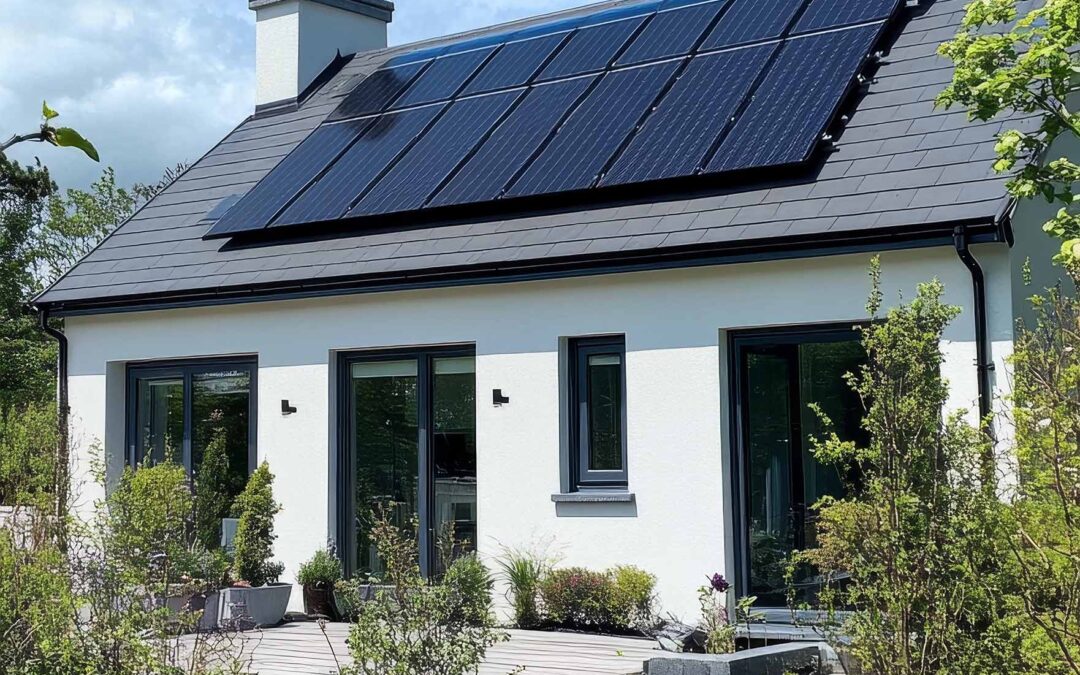5 Steps for Homeowners Planning a B2 BER Upgrade
Upgrading your home to a B2 Building Energy Rating (BER) or better is one of the most valuable home improvements you can make. A well-planned retrofit can dramatically reduce energy bills, improve comfort, lower your carbon footprint, and increase the market value of your property. Thanks to SEAI retrofit grants and low-cost green finance options, more Irish homeowners are now choosing to upgrade their homes.
This 5-step SEAI roadmap will guide you from the initial planning stage right through to achieving your upgraded BER rating – with practical tips to make the process easier.
1. First Step – Arrange A Home Energy Assessment
The first step in any retrofit is to arrange a Home Energy Assessment (HEA) this can be provided by Retrofit Design Ltd, a registered OSS contractor. This in-depth survey identifies exactly where your home is losing energy and sets out the specific measures needed to reach a B2 BER rating or better.
A HEA is essential for planning a cost-effective upgrade and is a mandatory requirement for all SEAI grant applications.
2. Second Step – Manage your Budget
Once you have your HEA report, you can start setting your retrofit budget. The report will highlight the recommended upgrades, which may include attic or wall insulation, installing a heat pump, upgrading to triple-glazed windows, or adding solar PV panels.
Your budget should account for the estimated cost of each measure, the value of any SEAI grants you are eligible for, and any available green loans or low-interest finance. The SEAI grant calculator is a great resource for working out your net costs after funding
3. Third Step – Apply for SEAI Grant
The third step is to apply for your SEAI grants. Under the One Stop Shop (OSS) scheme, homeowners can receive funding for multiple upgrade measures in a single project. This makes it easier to reach B2 or better while simplifying the grant process.
Common works covered include external wall insulation, attic insulation, renewable heating systems like heat pumps, solar PV installations, and, in some cases, window and door replacements.
Working with Retrofit Design Ltd – an SEAI-registered One Stop Shop provider, will ensure your application, grant claims, and technical compliance are managed for you.
4. Fourth Step – Works Planning
After your grant approval, you’ll move on to planning the works and setting a timeline. Sequencing is critical to a successful retrofit.
A typical order of works is to start with insulation, followed by airtightness measures, then upgrade windows and doors, install your renewable heating system, and finally add renewable electricity solutions such as solar PV.
To minimise disruption, ask your project manager to schedule related works together, such as insulation and window upgrades in the same phase.
5. Fifth Step – Post-works BER Assessment
Once all works are complete, a BER Assessor will conduct your final BER assessment to confirm you’ve achieved a B2 rating or better. This certification is essential for SEAI grant compliance and will also add value to your property. The benefits of a completed retrofit are immediate – lower energy bills, improved year-round comfort, and a reduced carbon footprint.
Planning a B2 BER upgrade in Ireland can seem daunting, but by following these five steps and partnering with Retrofit Design Ltd, your qualified SEAI-registered One Stop Shop provider, you can achieve your retrofit goals with less stress and greater efficiency.
The result is a warmer, greener, more valuable home.
Ready to start your retrofit journey?
Click Here to contact us today to arrange your Home Energy Assessment and receive your personalised SEAI retrofit roadmap.
or Call us on 066 9762746
Whether it’s a full deep retrofit through the SEAI One Stop Shop or individual upgrades via the Better Energy Homes Scheme, we’ll handle the process from assessment to completion – so you can enjoy the benefits without the stress.

